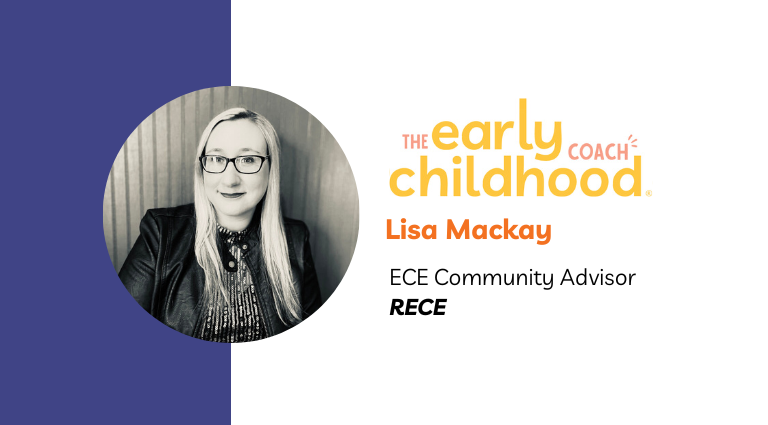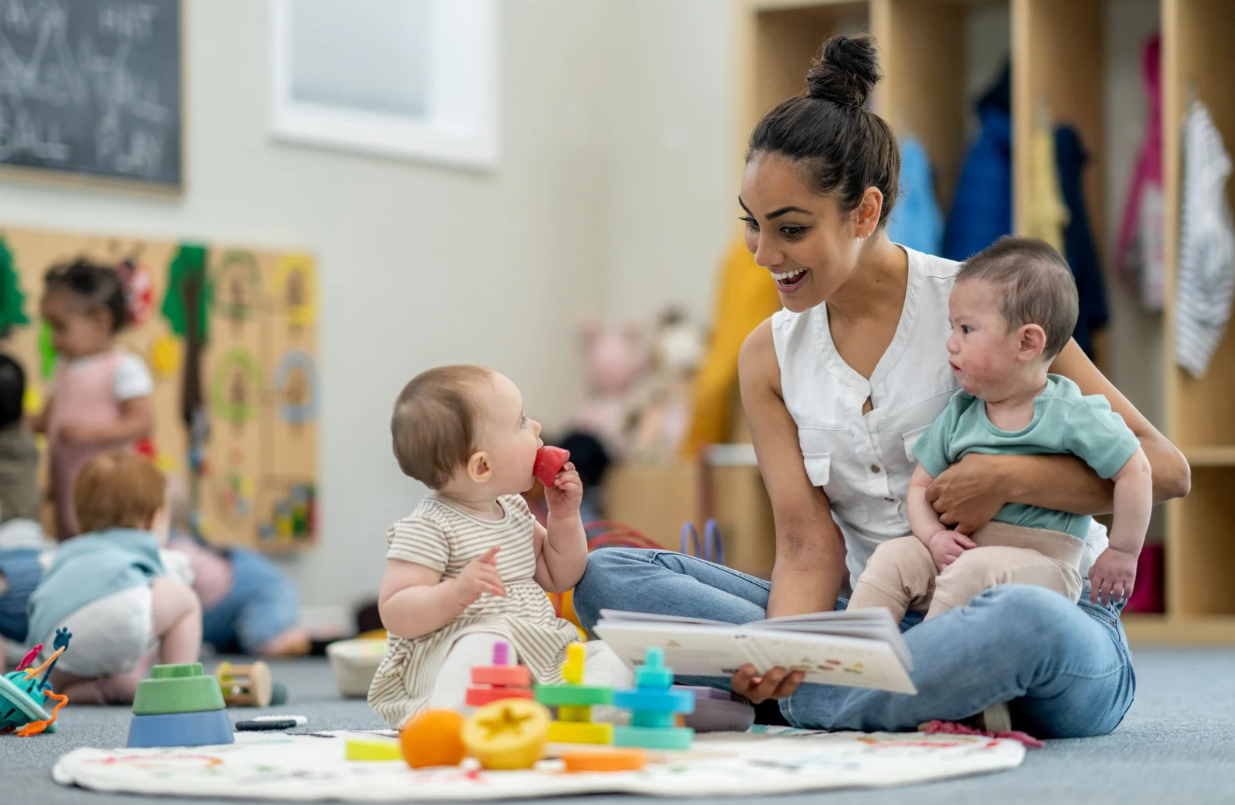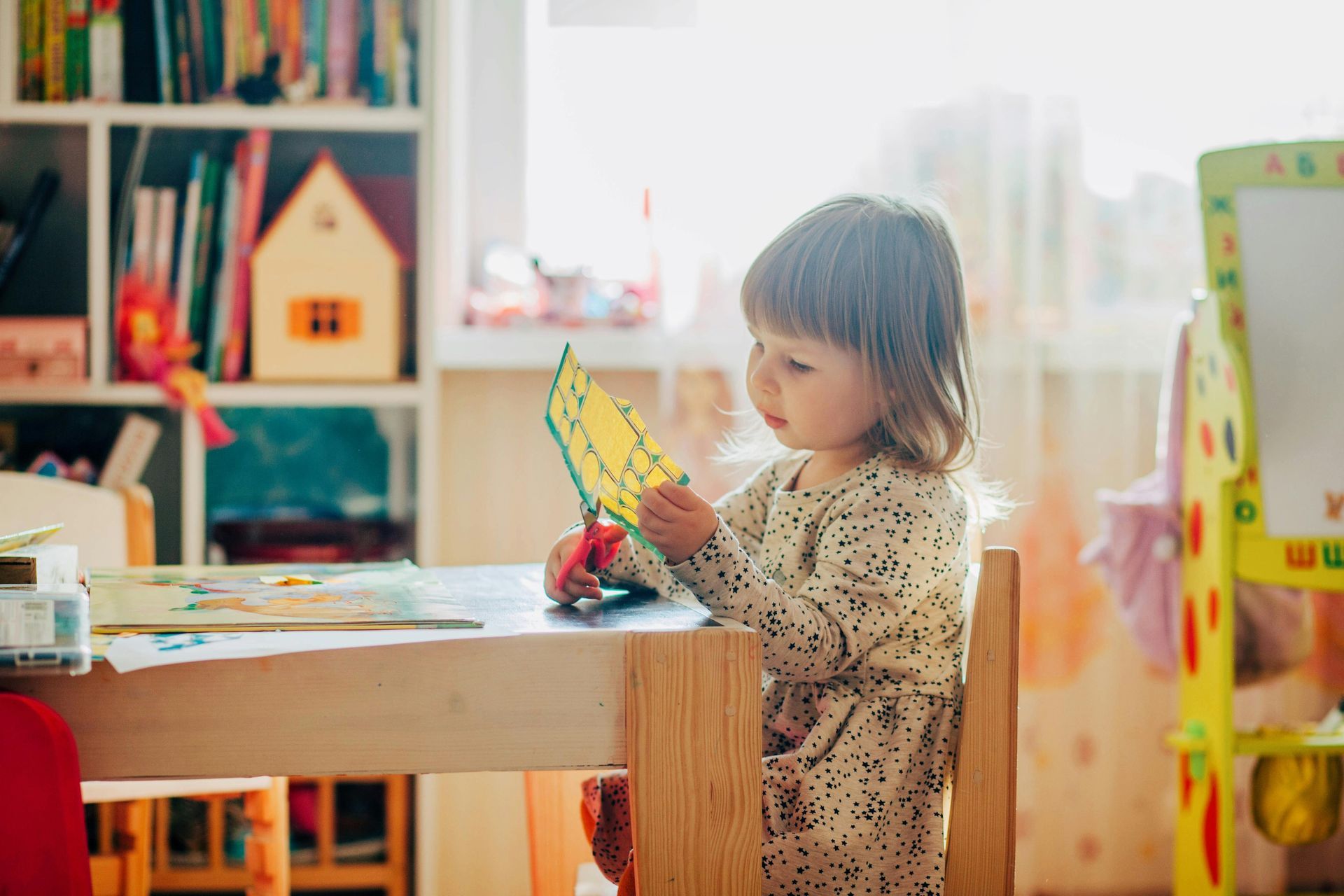Create an Inclusive Classroom: Child-Centered Strategies that Support a Sense of Belonging
Anisha Grossett • November 30, 2023
The classroom setup: an exciting endeavor met by nearly every educator. Classroom setup should always be intentional, whether it's the start of the school year, a move to a new classroom, or you just want to break up the monotony with a makeover. How a classroom looks, sounds, and functions is essential for children's learning. In fact, Loris Malaguzzi, the founder of the Reggio Emilia approach to education, coined the phrase "Third Teacher" (after parents and educators) when referring to the classroom environment.
There are many things to consider when you set up a classroom, such as furniture placement, learning centre offerings, and materials placement. What’s even more essential is the feel of your classroom. Children enter early learning programs with diverse backgrounds, perspectives, and needs. When you create a classroom where every child feels seen and heard by caregivers, you foster a sense of belonging and well-being for all the children in your care.
How can we ensure children feel valued, celebrated, and have a sense of belonging in their classroom? Let's examine six essential components that help children feel safe and secure in their learning environment.
Create a Classroom Where...
Children Feel Seen
- Offer diverse materials and books that display different families, skin colours, and cultures to help children feel represented. For example, ensure you offer crayons and paints include a full spectrum of skin tones, dolls of different races, and storybooks with alternative family units.
- Display children's pictures around the room to show they are a valuable part of your classroom.
>> Access to a diverse library of books is essential for children. Visit The ECC’s Amazon storefront
for an epic list of inclusive books!
Children Feel Heard
- Consider who is doing the talking. Are you speaking the most at group times while the children are quiet? Get them to open up and participate in fun ways. Choose a child to lead a song or game each day!
- Invite children to co-construct the learning environment with you (in age-appropriate ways). These fun questions might get them started:
- How could we change the dramatic play centre?
- What materials do you think we will need?
- I have a new train set to put out; where would you like to play with it?
- Provide a quiet space in your classroom where children can go when they feel overwhelmed or stressed. Cozy pillows or a bean bag chair with fidget toys or books can help calm a child quickly.
Creativity Is Encouraged
- Allow lots of time for creative expression. Art is one of the many ways children share their thoughts, feelings, and growing sense of self and interpretations of their world.
- Offer a variety of materials for visual arts, including different types of scissors, thicknesses of drawing and painting tools, and different colours, sizes, and textures of paper.
- Offer scarves, music, pieces of fabric, puppets, and props for children to act out their thoughts and feelings.
- Provide open-ended materials, such as loose parts, for children to express their ideas.
Achievements Are Celebrated
- Hang children's artwork at eye level to share with the class.
- Ensure children see their names around the classroom in various contexts, i.e., on name cards, photos, and in class books.
- Highlight big and small wins with the class, such as a structure someone worked hard on in the block centre or a student's newest drawing.
- Share successes with parents and families through daily discussions, parent boards/newsletters, or digital tools.
Children Feel Valued
- Consider children in all decision-making first and foremost.
- Build connections with children by asking questions about their learning, making eye contact, playing alongside them, sharing excitement, and respecting their ideas and feelings.
- Build relationships with families by getting to know them, celebrating successes, supporting needs, and openly communicating.
>> It’s vital for educators to feel seen and valued too! The ECC offers many workshops on diversity, ECE appreciation, and much more.
Download our full list to see how we can help!
Curiosity Is Cultivated
- Honour children's questions about the world around them. Instead of giving them the answer, offer tools to help them identify solutions on their own!
- Develop their sense of place. Provide natural elements in their day, such as helping them care for child-safe plants. Maintain connections to the outdoors with bird watching or cloud gazing.
- Ask about their interests and help them investigate!
When you consider these child-centric components during classroom setup, you can be confident that you are fostering a sense of belonging and community in your classroom. Below you will find additional resources for even more ideas that encourage inclusion. When children feel included in the classroom process, and their identities are at the forefront of our planning, they recognize themselves as an essential part of their classroom community.
Resources


December has a way of sneaking up on us, doesn’t it? One moment, we’re kicking off a new year with fresh goals, and the next, we’re knee-deep in holiday plans, wrapping up projects, and trying to catch our breath. For early childhood educators and leaders, this time of year can feel especially heavy — the final push before the holidays often comes with its own mix of joy, exhaustion, and reflection. But here’s the truth: the end of the year is not just a closing chapter. It’s an invitation — to pause, to rest, and to prepare ourselves for what’s to come. This December, let’s shift the focus from “finishing strong” to “resting strong.” Because when you rest well, you’re not stepping back — you’re stepping into the new year with clarity, energy, and purpose.

In early childhood education, we often talk about nurturing growth. But how often do we create the same nurturing environment for our own professional development? Whether you're an educator wondering what’s next or a childcare owner thinking about how to keep your best staff, one truth remains: career growth in ECE doesn’t follow a single, straight path. It’s dynamic. It’s personal. And it should be intentional. It’s time to explore the many ways early childhood professionals can move forward — not just up — in their careers.

Becoming a leader in Early Childhood Education (ECE) is an exciting yet challenging transition. Whether you're stepping into a leadership role for the first time or moving up within a company you've been a part of, this journey requires new skills, a fresh mindset, and a commitment to growth. Leadership in ECE goes beyond management — it’s about fostering relationships, guiding educators, and creating a thriving learning environment for children and staff alike. Essential Tips for New ECE Leaders & Supervisors 1. Embrace Active Listening Leadership isn’t just about giving instructions — it’s about truly hearing and understanding your team. Actively listen to educators, parents, and children to build trust and show that their voices matter. 2. Build Strong Relationships Strong leadership is rooted in strong relationships. Take time to connect with your team on a personal level, understand their strengths, and foster a culture of collaboration and respect. 3. Lead by Example Your team will look to you as a role model. Show professionalism, positivity, and a willingness to learn, and your team will follow suit. 4. Communicate Clearly and Consistently Clarity in communication helps prevent misunderstandings and ensures that expectations are met. Be open, transparent, and available for discussions. 5. Stay Open to Feedback Leadership is a continuous learning process. Invite and accept feedback with an open mind, and use it to refine your approach. 6. Prioritize Professional Development As an ECE leader, ongoing learning is key. Engage in training sessions, read leadership books, and seek mentorship to continue growing in your role.

Conflict is an inevitable part of any human relationship — and in the dynamic, emotionally rich environment of early childhood education, it can arise in many forms. Whether you’re leading a team or working directly with children and families, knowing how to approach conflict with confidence, empathy, and clarity is a key part of thriving in this field. At The Early Childhood Coach, we believe that conflict doesn’t have to be destructive — it can actually be a catalyst for growth, stronger relationships, and positive change. Let’s explore the different types of conflict you may encounter, and how you can manage them with intention and leadership.

In today’s fast-evolving world of early childhood education, professional development can no longer be a one-time event or an annual checkbox. The most innovative organizations are embracing a new model of learning — one that’s flexible, sustainable, and embedded into the culture of their team. Enter: the Learning Management System (LMS) and the rise of in-house training ecosystems. 🌍 The Shift to Ongoing, Accessible Learning A Learning Management System (LMS) is a digital platform used to deliver, track, and manage training and education. Think of it as a virtual hub where your team can access workshops, modules, videos, and interactive learning activities — all at their own pace. More than a trend, LMS platforms are becoming an essential tool for childcare organizations that want to stay aligned with licensing requirements, increase staff engagement, and reduce onboarding time for new educators. But even more importantly, they empower staff to grow in real time — with content tailored to their daily realities.

Welcoming new Early Childhood Educators (ECEs) and staff into your center is more than just handing them a policy manual and showing them the breakroom. A strong, innovative onboarding process sets the foundation for their success, increases retention, and fosters a positive workplace culture. Yet, research shows that onboarding remains a challenge in many early childhood settings. The Challenge of Onboarding in Early Childhood Education A 2022 report from the Society for Human Resource Management (SHRM) found that nearly 30% of new employees leave a job within the first 90 days, with lack of proper onboarding and insufficient mentorship being key reasons. In early childhood education, this is especially concerning, as new hires must quickly adapt to a fast-paced environment while learning center policies, child development best practices, and team collaboration strategies. Traditional onboarding methods often focus on paperwork and compliance, missing the opportunity to engage new educators in meaningful ways. To combat high turnover and ensure new hires feel supported, early childhood leaders must embrace innovative and unconventional onboarding strategies that foster connection, growth, and a sense of belonging from the start.

As educators working with infants, one of the most important tools in our communication tool box is our voices! Lalalalaaaaaa! Our voices are dynamic and powerful tools used for many things including singing, laughing, advocating, and so much more. One of these these amazing and scientifically proven ways to use our voices is child-directed speech, also known as parentese or as I like to call it - Educatorese 😉! Sometimes mistaken for “baby talk”, child-directed speech plays a critical role in how infants and toddlers learn (and enjoy) language. In this blog post, we will dive into the science of child directed speech, some practical ways to incorporate it effectively into childcare connections, and reflect on how you use your voice with babies!

“The environment is the third teacher.” This phrase is one I’ve heard often throughout my career in early childhood education. Rooted in the Reggio Emilia approach, it emphasizes the environment as an intentional and purposeful extension of learning. I’ve wholeheartedly embraced this philosophy in my own classrooms, recognizing that a well-designed environment is more than just a space—it’s an active teaching experience and a direct reflection of a program’s values. Have you ever taken a step back to observe how children interact with their surroundings? Watching how they explore, navigate, and engage with their environment can be incredibly insightful. As educators, it’s our role to create a space that fosters curiosity, collaboration, and meaningful learning opportunities. A thoughtfully designed classroom should: ✔ Have a natural flow that supports exploration and learning. ✔ Reflect children’s interests and showcase evidence of their growth. ✔ Provide opportunities for investigation, creativity, and problem-solving. ✔ Serve as a tool for classroom management by promoting engagement and minimizing disruptions. For example, we know children love to run. Structuring the classroom layout with intentional furniture placement can help prevent open running paths while still allowing movement and engagement. A well-planned space should feel inviting, safe, and supportive while fostering a sense of belonging for every child.

As educators, we know the environment we create plays a vital role in shaping the learning experiences of children. A well-organized, thoughtfully designed classroom sets the stage for creativity, exploration, and growth—all while promoting positive behavior and independence. Whether you're setting up your classroom for the first time or giving it a mid-year refresh, these actionable tips will help you create a welcoming, functional, and inspiring space for success.

It was a typical morning in the classroom. The hum of busy little hands and curious minds filled the air. Maya, an Early Childhood Educator (ECE), glanced around, her heart swelling with pride. It was moments like these—when a child’s eyes lit up with understanding or when a shy toddler found the courage to join a group—that reminded her why she chose this path. Yet, deep down, Maya often wondered: Am I really a leader? Perhaps you, too, have asked yourself the same question. The word "leader" may bring to mind images of CEOs in boardrooms or heads of organizations rallying teams. But let’s shift that perspective. Leadership isn’t about titles; it’s about influence, impact, and the way you inspire those around you—adults and children alike. As an ECE, you are already a leader. The question is, how can you activate your leadership fully? Let’s take a journey together, exploring how to unlock the leader within. Because here’s the truth: Every ECE is a leader in early childhood education.
